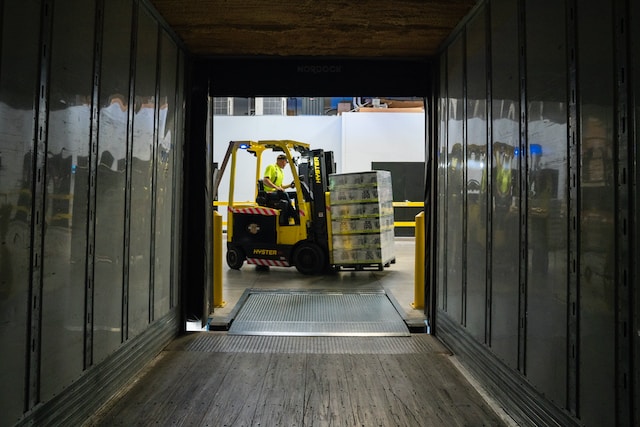

Whether you’re transporting bales of hay on the farm or stocking shelves in your local grocery store, forklifts are vital tools. But, like other equipment, they need regular maintenance and replacement parts.
Knowing the essential Yale forklift parts can help avoid costly repairs and unnecessary downtime.
The forks are the vertical prongs attached to the carriage and designed to grip a load for transport. They come in various lengths and widths to suit different types of loads. They should be a height that can clear overhead obstacles when driving on an incline.
Check the fork shank and heel retaining faces for signs of wear or damage. Also, look at the fork blade support face and keep the face for cracks, dents or other damage. You may also need specialty forks like block forks to lift concrete blocks or tire forks to handle tires. Also, consider a hydraulic fork positioner to make aligning your divisions with your loads easier.
The weight of a forklift plays a critical role in multiple operational facets. From affecting load capacities and stability to determining whether the machine is suitable for different surfaces or gradients, understanding the specifications of a forklift’s weight is essential to operating it safely.
Located on the back of the truck frame, the counterweight balances the forklift and prevents it from tipping when carrying heavy loads. This is achieved by positioning the compensation at the rear of the machine to offset the force applied to the forks by their fulcrum point.
There are two types of forklift counterweights. Bulk type features a hollow body that’s typically lead-filled, and stack-type counterweights consist of metal plates designed to be stacked or removed to enable configuration for maximum lift weight.
Like the mast of a ship, forklift masts rise vertically to support the forks. They lift and lower loads using a system of inner and outer mast rails (or channels) and chains that move alongside the rails as they rise or descend.
The carriage is a solid steel frame that fits inside the mast rails. It connects the forks or other attachments to the mast and contains a load backrest.
The most basic mast setup has one mast channel offering limited free lift and is best suited for low-level, simple applications where overhead clearance isn’t a concern, such as stacking trucks in loading bays. Other options have more stages, increasing lifting heights and capacity.
When a forklift loses control, the machine’s chassis, or base frame, is the first thing that’s damaged. Production machines, door frames and racks are next in line, and lastly, concrete, blacktop, and dock plates suffer damage from the displaced forklift tires.
Forklift tires must be in good shape to ensure proper forklift performance and safety. The forklift tires must be replaced if worn out or damaged. Make sure you use the same type of tire on both the front and rear tires. Sensitive applications like food, paper or printing may require non-marking tires because standard tires contain carbon black and can cause cross-contamination.
Typically found on Class II and III forklifts and some Class VII rough terrain models, the overhead guard (OHG) protects the operator from falling objects. OHGs are not designed to take the full impact of a load dropping from high heights. However, they will crush and deflect.
Steel load backrests/extensions are used on both reach trucks and standup counterbalanced trucks to prevent the bag from shifting backward while being lifted. This is especially important for raising loose materials that could fall back on the operator.
Power steering, reservoir tank, and brake hoses should be checked regularly for wear and damage.
The tires on a forklift are responsible for absorbing the weight of the load and keeping the vehicle from running into protruding objects. The condition of a forklift’s tires can have a big impact on productivity and the overall safety of the lift.
Depending on the tire type, several factors can affect how long they last. For example, an extremely humid environment can cause the tires to “spin” more than normal and shorten their life.
There are two types of forklift tires, smooth cushion and traction cushion. Ensure you have the same type on both front and rear wheels. Most tires will have a safe wear line on the sidewall to indicate when to replace them.
Who doesn’t love chocolates, right? No matter the age, a chocolate bar with a customized…
How to Relieve Eye Strain: Do you find yourself blinking throughout the day? Do your…
Pagalmovie’s extensive collection of Bollywood, Hollywood, and regional films has made it associated with free…
For an excellent Google Ads campaign, it is essential to understand the PPC auction process.…
As of 2024, the number of online shoppers worldwide reached approximately 2.71 billion, accounting for…
For a retailer to provide their customers with the products they want, when they want…